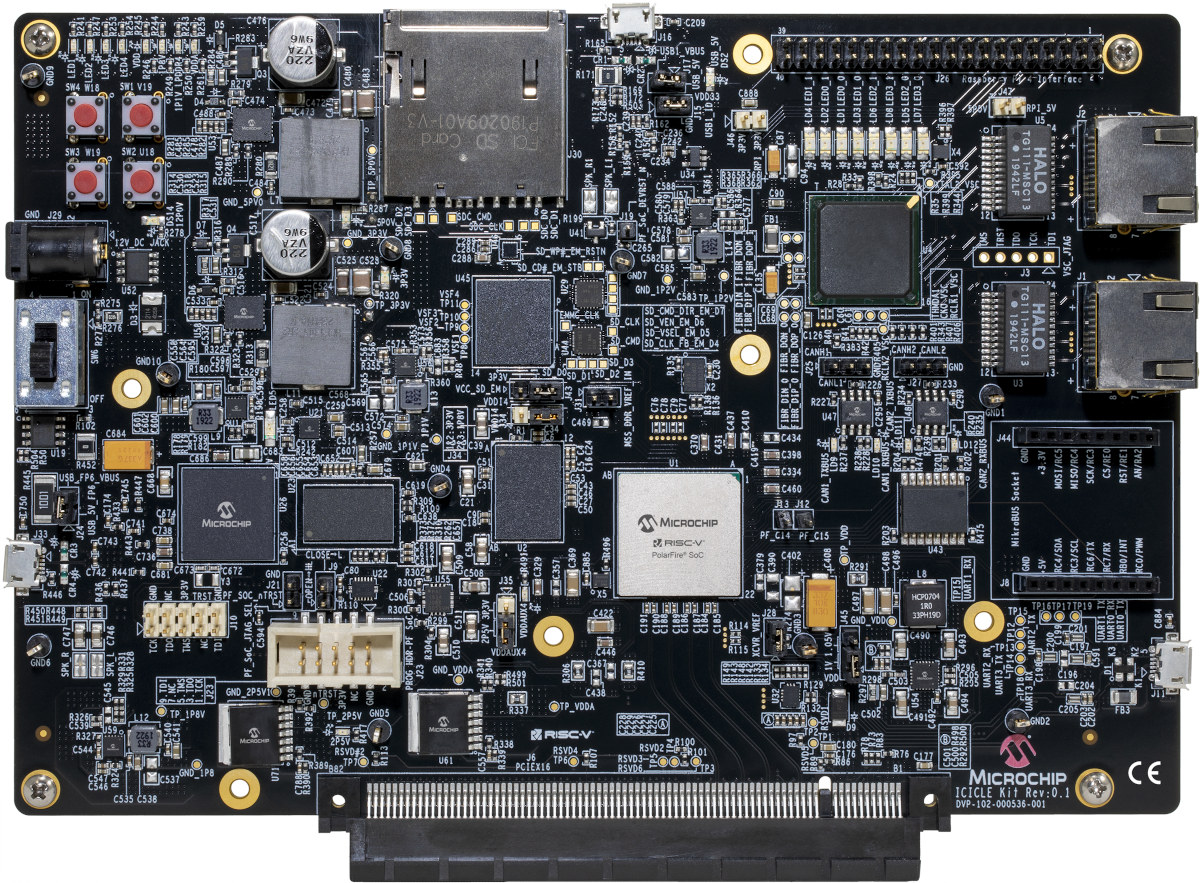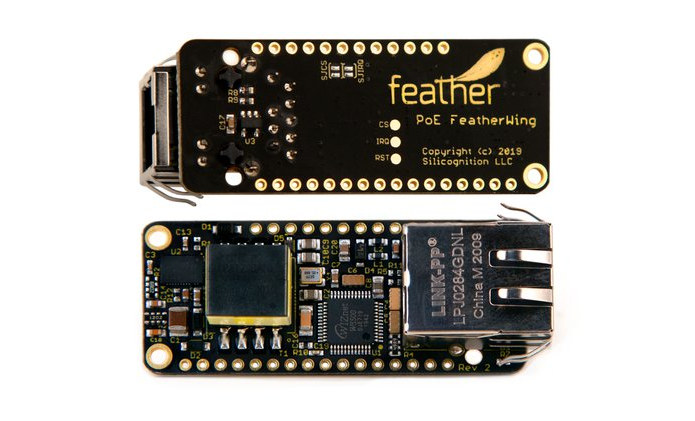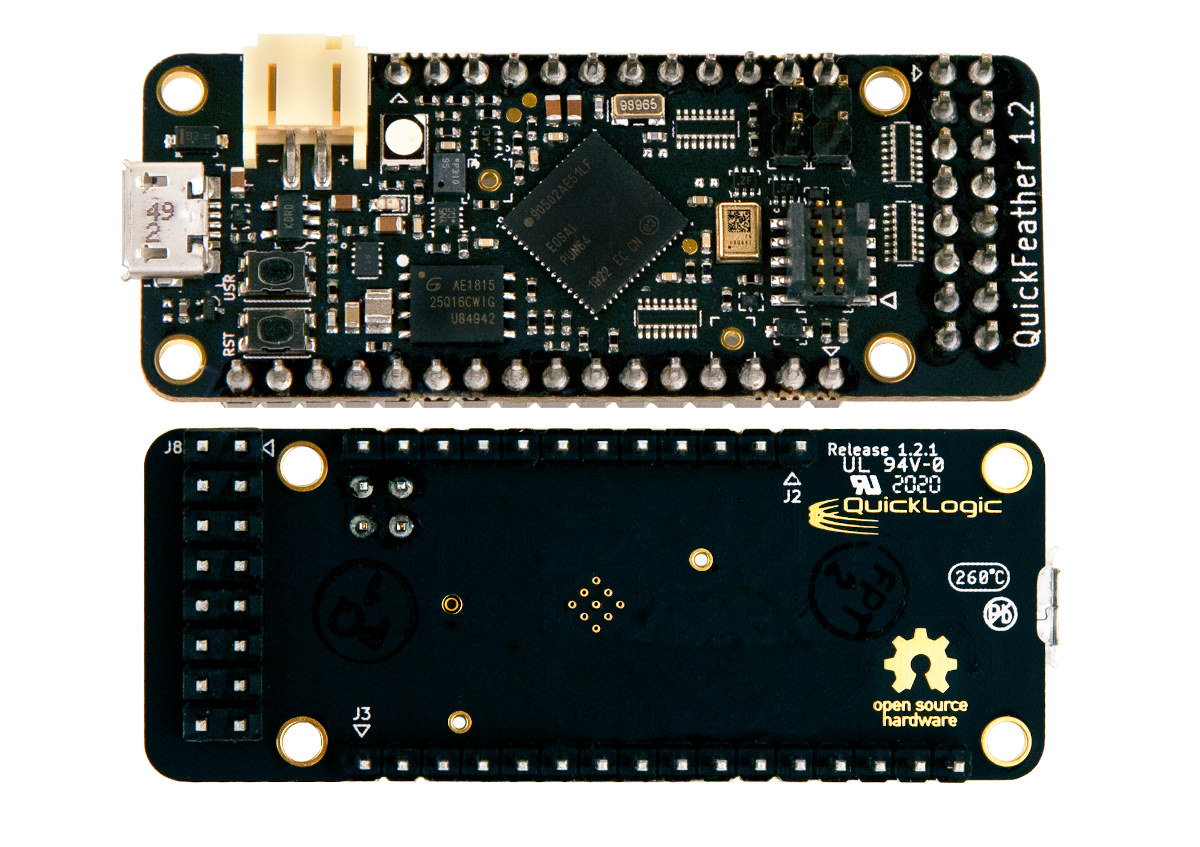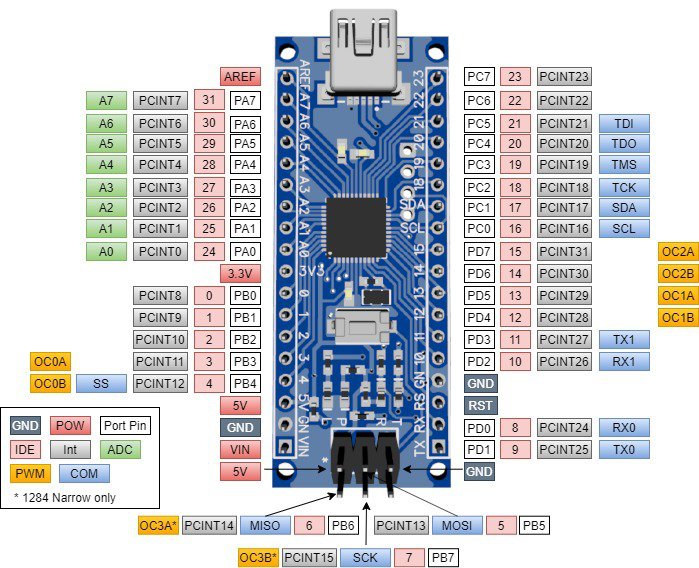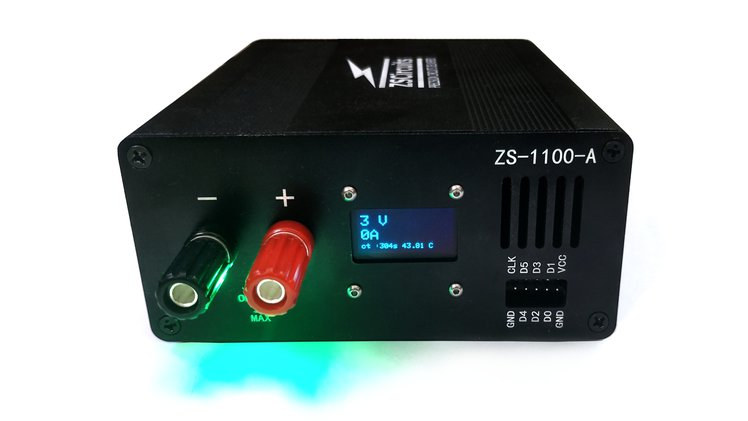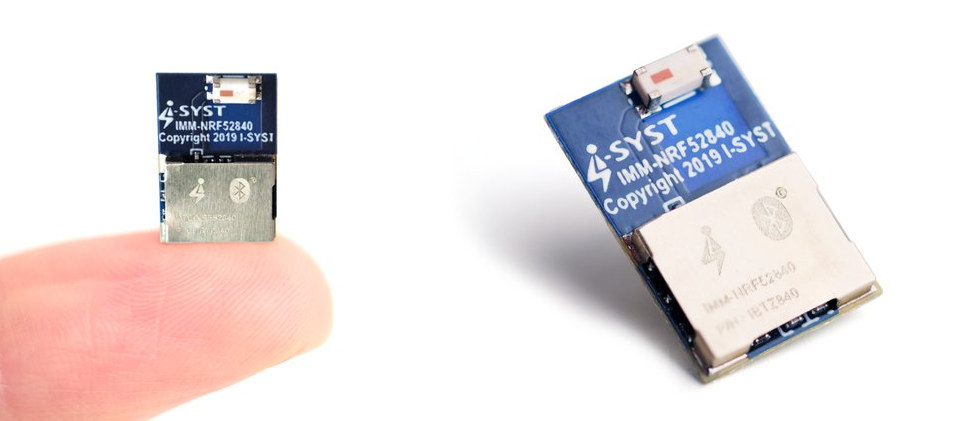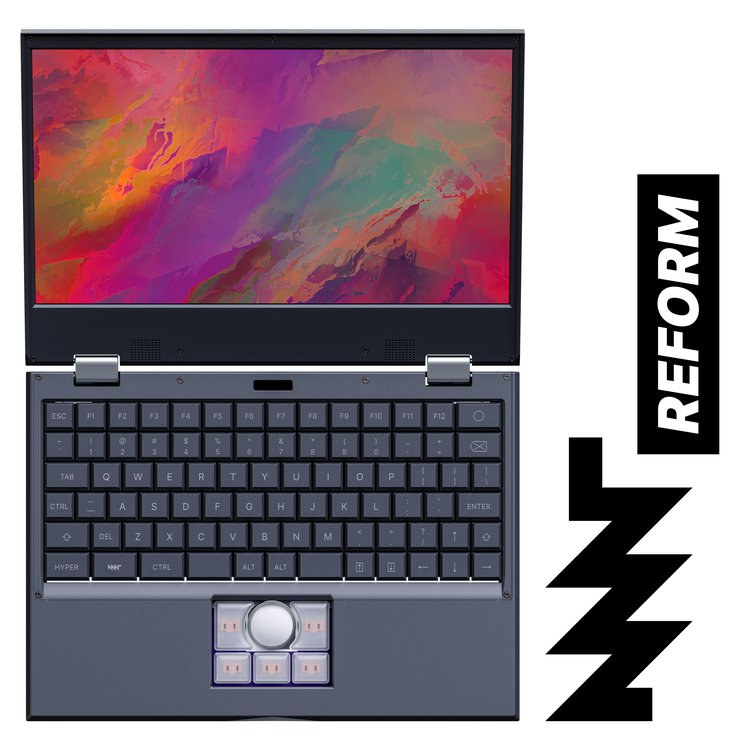We got some more details about PolarFire RISC-V FPGA SoC late last year, and we were promised a Linux capable 64-bit RISC-V & FPGA development board with PolarFire SoC Icicle kit in Q3 of 2020. We are already in July 2020. So where is the board? Oh, look! It’s right here on Crowd Supply where it is offered for $499, and shipping is expected to start in mid-September. PolarFire SoC Icicle specifications: SoC FPGA – PolarFire SoC MPFS250T-FCVG484EES penta–core RISC-V CPU subsystem (1xRV64IMAC, 4xRV64GC) with 254K LE non-volatile fabric, 784 18 × 18 math blocks, secure boot, 4x 12.7 Gbps SERDES, FCVG484 package (19 × 19 mm, 0.8 mm pitch) System Memory – 2GB LPDDR4 x32 Storage – 1 GBit QSPI Flash, 8GB eMMC Flash or SD card slot (multiplexed) Video Output – HDMI 2.0 (removed from final board) Connectivity – 2x Gigabit Ethernet, Wi-Fi, and Bluetooth USB – 1x […]
PoE FeatherWing Brings PoE, Unique MAC Address to Adafruit Feather Boards (Crowdfunding)
[Update: In the initial version of this post, Giant Board was wrongly attributed to Silicognition LLC (Patrick Van Oosterwijck). It was actually made by Groguard] Silicognition LLC (Patrick Van Oosterwijck)’s PoE FeatherWing is an expansion board that adds PoE support to Adafruit Feather boards and can handle up to 4 Watts of power. The expansion board also comes with a built-in globally unique MAC address. It’s similar to the official Ethernet FeatherWing, but with the addition of PoE and a unique MAC address. PoE FeatherWing key hardware features and specifications: WIZnet W5500 Ethernet controller up to ~13 Mbps Microchip 24AA02E48 2 Kbit serial EEPROM with built-in globally unique MAC address to avoid having to change and recompile the code for each device. Power Isolated IEEE 802.3at Class 1, Mode A and Mode B Power over Ethernet (PoE) with up to 4W of output power available via an RJ45 Ethernet port […]
QuickFeather Board is Powered by QuickLogic EOS S3 Cortex-M4F MCU with embedded FPGA (Crowdfunding)
Yesterday, I wrote about what I felt what a pretty unique board: Evo M51 board following Adafruit Feather form factor, and equipped with an Atmel SAMD51 Cortex-M4F MCU and an Intel MAX 10 FPGA. But less than 24 hours later, I’ve come across another Adafruit Feather-sized Cortex-M4F board with FPGA fabric. But instead of using a two-chip solution, QuickLogic QuickFeather board leverages the company’s EOS S3 SoC with a low-power Cortex-M4F core and embedded FPGA fabric. QuickFeather board QuickFeather specifications: SoC – QuickLogic EOS S3 with Arm Cortex-M4F Microcontroller @ up to 80 MHz and 512 Kb SRAM, plus an embedded FPGA (eFPGA) with 2400 effective logic cells and 64Kb RAM Storage – 16Mbit SPI NOR flash USB – Micro USB port with data signals tied to eFPGA programmable logic Sensors – Accelerometer, pressure sensor, built-in PDM microphone Expansion I/Os – Breadboard-compatible 0.1″ (2.54 mm) pitch headers including 20 Feather-defined […]
Pandauino 644/1284 Narrow are Compact ATmega644/1284 Arduino Boards (Crowdfunding)
Pandauino 644 Narrow and 1284 Narrow boards powered by Microchip ATmega644 and ATmega1284 8-bit AVR MCU in a compact form factor slightly larger than the official Arduino Nano. The Pandaunino boards also come with up to eight times more RAM, more flash, as well as ten extra digital I/Os compared to Arduino Nano while keeping software compatibility. Pandauino 644/1284 Narrow boards specifications: MCU 644 Narrow – Microchip ATmega644 8-bit AVR microcontroller with 64KB flash, 4KB SRAM, 2KB EEPROM 1284 Narrow – Microchip ATmega1284 8-bit AVR microcontroller with 128KB flash, 16KB SRAM, 4KB EEPROM USB – 1x Micro USB port for power and programming I/Os – 24x digital I/Os including up to 8x PWM (6x max for 644 Narrow), 8x analog I/Os, 1x SPI, 2x USART, 1x I2C Power Supply – 5V input with on-board 5V and 3.3V regulators. Max current – USB: 500 mA limited by a PTC. Vin: 800 […]
ZS1100A IoT Power Meter Supports Sigrok Open-Source Software (Crowdfunding)
A few months ago, I tested Qoitech Otii Arc power meter & DAQ system designed for developers of IoT devices, and fount out it would be incredibly useful to developers of battery-operated devices since it shows voltage and current graphs synchronized with the serial output making it easy to see where software might be optimized. The system can also capture analog and digital signals from the DUT and emulate batteries with user-defined characteristics. But this weekend, I’ve come across a very similar solution with ZS1100A IoT power meter that also happens to be compatible with Sigrok open-source signal analysis software, and the corresponding Pulseview GUI. ZS1100A IoT power meter specifications: Measurements Output Voltage Range – 0 to 6 V programmable in 10 mV steps with +/- 5mV accuracy, Current Measurement Range – -0.5 A to 1.5 A (linear range) with < 0.1 μA resolution, accuracy of 1% of measured value […]
Fingernail-sized BLYST840 nRF52840 Module Features Bluetooth 5.2, Thread, Zigbee and 46 I/O (Crowdfunding)
Canada based I-SYST inc has designed a tiny nRF52840 module about the size of a fingernail. BLYST840 module fully leverages the capability of Nordic Semi’s wireless microcontroller with Bluetooth 5.2, Thread, and Zigbee connectivity, and exposes 46 I/Os. BLYST840 specifications: Wireless MCU – Nordic Semiconductor nRF52840 Arm Cortex-M4F microcontroller @ 64 MHz with 1 MB flash, 256 KB RAM Connectivity Bluetooth 5.2 up to 2 Mbps, -96 dBm sensitivity for long-range; Up to 111 dB link budget; Bluetooth Mesh IEEE 802.15.4 radio support for Thread & Zigbee NFC-A Built-in ceramic antenna Output power – Adjustable from +8 dBm to -20 dBm 46 I/O pins exposed via pads around the edges of the module including QSPI/SPI/2-wire/I2S/PDM/QDEC Programmable Peripheral Interface (PPI) SPI interface @ 32 MHz Quad SPI interface @ 32 MHz EasyDMA for all digital interfaces USB 2.0 (12 Mbits) 12-bit/200K SPS ADC Security Arm TrustZone Cryptocell 310 128-bit AES/ECB/CCM/AAR co-processor […]
megaAI 4K AI Camera Board Features Movidius Myriad X VPU (Crowdfunding)
megaAI 4K AI camera board reminds me of Kendryte K210 based boards such as Maixduino used for computer vision for tasks such as object tracking or face recognition, but instead of just handling QVGA at around 15 to 18 fps, megaAI can supports inference at 4K resolution up to 30 fps. The tiny board can achieve this feat by leveraging the 4 TOPS of AI processing power delivered by Intel Movidius Myriad X VPU (Vision Processing Unit) while consuming only around 2.5 Watts. megaAI board specifications: AI Accelerator – Intel Movidius Myriad X VPU delivering up to 4 TOPS (Trillion Operations Per Second) Camera – 12 MP 4056×3040 Auto-Focus (8cm-∞) camera with 81 degrees horizontal Field of View (HFOV) Video RAW Output – 4K @ 60FPS or 12MP @ 30FPS (with USB3.1 Gen2 Host) Hardware Image Encoding – 12 MP JPEG encoding Hardware Video Encoding: 4K H.265 encoding at 30 […]
MNT Reform Open Source Hardware Laptop Launched for $999 and Up (Crowdfunding)
MNT Reform DIY Arm Linux laptop has been in the works at least since 2017. The open source hardware laptop is also fully modular with Boundary Devices Nitrogen8M SoM featuring NXP i.MX 8M quad-core Cortex-A53 processor and 4GB RAM, M.2 NVMe SSD storage, and standard, replaceable 18650 batteries. The good news is the laptop is now almost ready for prime-time and has been launched on Crowd Supply with price starting at $999 in DIY kit form without storage, and $1,300 for a complete, assembled system with 256GB NVMe storage. If you don’t have that amount of money to spend, but would like to support the project, a $40 MNT Reform T-shirt is also offered. Alternatively, the motherboard only goes for $550. Here’s a reminder of MNT Reform specification: SoM – Boundary Devices Nitrogen8M SoC – NXP i.MX 8MQuad quad-core Cortex-A53 processor @ 1.5 GHz, 1x Arm Cortex-M4F real-time core Vivante […]


